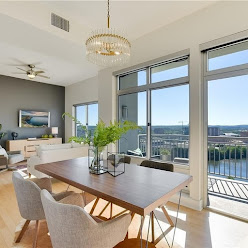Interior Designing Based with 5 Important Rules
A marvellous design is achieved when you can follow the rules which do not let your design become unobvious. An Austin interior designer should know the best practice to complete a design. Lets see what rules we are talking about.
1. Harmony
Your home is a mixture of many parts like stairways and different rooms with passages that totally makes it a unit. There is a harmony practiced throughout the design. All the elements like color, textures, patterns should complement each other and should look as incomplete without each other. The design should be such that the whole look is seen as a continuous design statement. A uniform color that is themed should be perfected with the style in full design. When there is a sense of unity the transformation looks correct and obvious.
2. Rhythm
A visual interest is designed in a rhythm with repetition and contrast. You can use the same color in different patterns or texture pillows and cushion colors to make a design that shows some kind of interest. In an interior decor portfolio in Texas, you can see that the same color is used and the texture is also considered for a definitive design. Rhythm can be used in four properties like repetition, progression, transition and contrast. Every element has its own features but when put in properties, it can effect morally and visually with the selection of style.
3. Balance
The balance is putting each thing in the same amount to make it perfect fit. A stability comes first in designing. If you have put two cupboards of different sizes near the bed in the room, it will not look interesting but will look loaded. Therefore, a thought is given to the design that a balance can be made so the design does not look discomfortive. It should be integrated with a nice gesture. A shift in the thinking to look at things in a more polite way is observed. An equal distribution of the weight and shapes can be interesting for the overall look. A balance can be observed in these ways:
- Symmetrical Balance: A traditional design can have much of the needed balance. It can be spaces that are repeated on two sides of a room. Like placing two chairs on either side of a table. The design can be more or less the same for designing a space with equal sides.
- Asymmetrical Balance: It can be visualised by putting equal weights on lines, colors, forms, and textures. Dissimilar objects of equal size or weight can be put like for balancing a sofa on one side, three chairs are put on the other side. An asymmetrical balance can be more complex and casual
- Radial Balance: The description of chairs around a round table or a balance that can cover and complete the design balance is known as radial balance.
4. Focal Point
There has to be some focal points with some consideration that this place will be perfect for performing an activity. The viewers should know by the look that it's a kitchen or living room. You can make built-ins that also make rooms for users easy as they can handle the things with care. A towel can be placed in the bathroom, and the kitchen can be decorated with flowers in a vase on a platform. You can place napkins in the kitchen or can have built-in small cupboards for placing the utensils. Coloring a furniture or art piece can be a good way of highlighting a thing in the room.
5. Proportion and Scale
A ratio has to be maintained in design so that each space is equally proportioned or space can be kept behind a line to place things. The size of an object can be related to others and can make the design more appropriate with spacing proportionately. The space has to be maintained so that one thing does not overlap with another. A smaller framework can be equal in ratio to a larger framework. The best interior designer in Austin knows how important it is to move pieces in an order and make variations without disturbing the design. The design is focused but rules need to be followed for integrating things.

Comments
Post a Comment